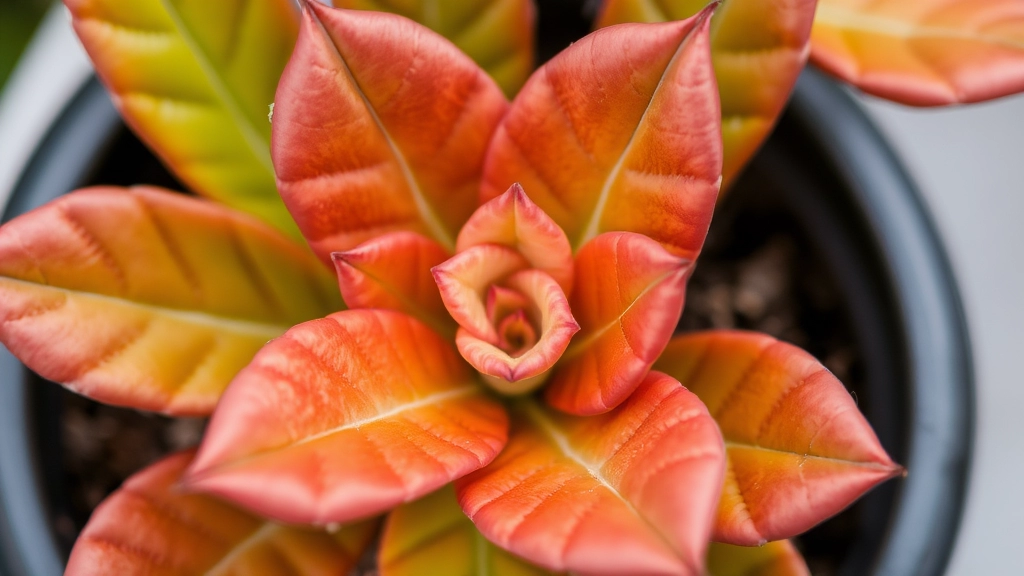Kalanchoe Plant Care: Addressing Brown Leaves
Have you noticed your Kalanchoe plant leaves turning brown? It’s a common issue many plant enthusiasts face, and it can be frustrating. But don’t worry, I’m here to help you figure out why this is happening and how to fix it. Whether it’s due to overwatering, under-watering, or maybe even a pest problem, identifying the root cause is the first step to getting your plant back to its vibrant self.
Possible Reasons for Brown Leaves
Let’s dive into the possible reasons and solutions for your Kalanchoe plant leaves turning brown. We’ll explore everything from watering habits to sunlight exposure, ensuring you have all the information you need to keep your plant healthy and thriving.
Common Issues
- Overwatering
- Under-watering
- Pest Infestation
- Insufficient Sunlight
So, let’s get started and bring that lush green back to your Kalanchoe!
Common Causes of Brown Leaves in Kalanchoe Plants
Have you noticed your Kalanchoe plants developing brown leaves? You’re not alone. Many plant enthusiasts encounter this issue, and it can be quite concerning.
Brown leaves on Kalanchoe plants can stem from several factors. Understanding these causes is crucial for restoring your plant’s health.
Identifying Overwatering Issues
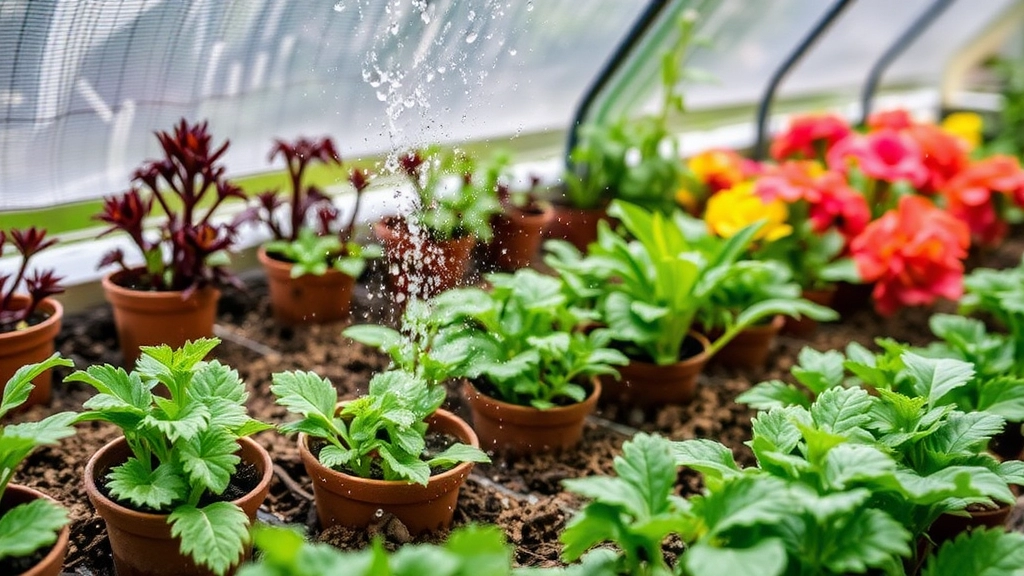
Have you ever looked at your Kalanchoe and noticed those brown, mushy leaves?
It’s a common worry for plant lovers, and overwatering might be the culprit.
When you give your Kalanchoe too much water, it can lead to a host of problems.
Signs of Overwatering:
- Brown Leaves: The tips or edges might turn brown and feel soft.
- Wilting: Despite the soil being wet, the plant can look droopy.
- Yellowing: Leaves may turn yellow before going brown.
- Mushy Stems: The stems can feel soft and squishy, which is a bad sign.
So, how do you know if your watering habits are off?
First, check the soil.
If it’s soggy or stays wet for too long, you might be overdoing it.
Tips to Avoid Overwatering:
- Use Well-Draining Soil: A mix designed for succulents works wonders.
- Check the Pot: Make sure it has drainage holes.
- Water Sparingly: Only water when the top inch of soil is dry.
- Observe the Weather: Hotter days may require more frequent watering, but always check the soil first.
Remember, Kalanchoe plants prefer to be on the drier side.
If you suspect overwatering, let the plant dry out for a bit.
Recognizing Underwatering Symptoms
Have you noticed your Kalanchoe leaves starting to look a bit sad and brown? It might not just be overwatering; underwatering can also be a sneaky culprit. Understanding the signs of underwatering is essential for maintaining the health of your plant.
Key Symptoms of Underwatering:
– **Crispy Leaf Edges:** If the edges of the leaves feel dry and crispy, it’s a clear sign your plant is thirsty.
– **Wrinkled Leaves:** Leaves may appear shrivelled or wrinkled, indicating they are lacking moisture.
– **Drooping Stems:** The stems may start to droop, giving your Kalanchoe a tired appearance.
– **Leaf Drop:** If your plant begins to lose leaves, especially the lower ones, it’s a signal that it’s not getting enough water.
– **Discoloration:** Leaves may turn a dull green or brown, losing their vibrant hue.
Recognizing these symptoms early can help you take action before it’s too late.
How to Address Underwatering:
– **Check Soil Moisture:** Stick your finger into the soil about an inch deep. If it feels dry, it’s time to water.
– **Water Thoroughly:** When watering, ensure that water flows through the drainage holes. This promotes deep root hydration.
– **Adjust Watering Schedule:** Depending on your environment, you may need to water more frequently during hot weather or less in cooler months.
Understanding how to identify and treat underwatering issues is crucial for the overall health of your Kalanchoe. For more detailed care tips, you can refer to this [complete guide to growing Kalanchoe](https://planthq.org/how-to-grow-kalanchoe-essential-care-tips-and-tricks/). Additionally, if you are looking for specific varieties, check out the [popular long-stem Kalanchoe varieties and care tips](https://planthq.org/popular-long-stem-kalanchoe-varieties-and-care-tips/).
Effects of Poor Drainage on Kalanchoe Leaves
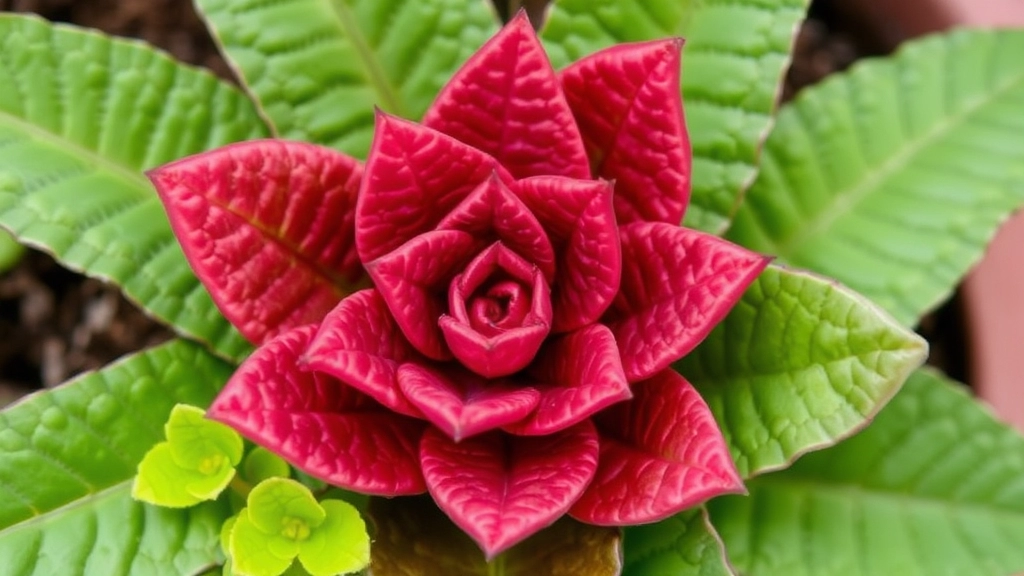
Have you ever noticed your Kalanchoe leaves turning brown and wondered if poor drainage could be to blame?
Poor drainage can significantly impact the health of your Kalanchoe plants, leading to unsightly brown leaves and various other issues.
When water accumulates at the roots due to inadequate drainage, it creates a soggy environment. This can lead to root rot, which ultimately affects the entire plant.
Here are some key effects of poor drainage on Kalanchoe leaves:
- Brown Leaf Tips: One of the first signs of trouble is the browning of leaf tips. This indicates that the roots are not getting enough oxygen due to waterlogged soil.
- Wilting: Even with excess water, Kalanchoe can exhibit wilting. The roots become damaged, preventing them from absorbing nutrients effectively.
- Yellowing Leaves: While yellow leaves can indicate other issues, they often accompany poor drainage. The plant struggles to take in essential nutrients, leading to a lack of chlorophyll.
- Foul Odour: If you notice a foul smell coming from the soil, it’s a strong indicator of root rot, which is often exacerbated by poor drainage.
To prevent these issues, ensure your Kalanchoe is planted in well-draining soil and in a pot with drainage holes.
## Impact of Inadequate Light Exposure
Have you noticed your Kalanchoe plants developing brown leaves, and you’re unsure why? One common culprit could be inadequate light exposure.
Kalanchoe plants thrive best in bright, indirect sunlight. When they don’t receive enough light, they can exhibit several distress signals, including leaf browning.
### Signs of Inadequate Light:
– **Stretched Growth**: If your Kalanchoe appears leggy or elongated, it’s reaching for more light.
– **Leaf Discoloration**: Brown tips or edges can indicate that your plant is struggling.
– **Slow Growth**: A noticeable decline in growth rate may suggest insufficient light.
### Solutions for Improving Light Exposure:
– **Relocate Your Plant**: Move it closer to a window that receives bright, indirect sunlight.
– **Supplement with Grow Lights**: If natural light is limited, consider using [LED grow lights](https://planthq.org/optimal-sunlight-for-thriving-kalanchoe-plants/) to provide the necessary brightness.
– **Rotate Regularly**: To ensure even light distribution, rotate your plant every couple of weeks.
For more detailed care tips, you can check out this [complete guide to Kalanchoe plant care](https://planthq.org/complete-guide-to-kalanchoe-plant-care/).
Role of Temperature Fluctuations

Have you ever noticed your Kalanchoe plants starting to look a bit sad when the temperature swings?
Temperature fluctuations can be a sneaky culprit behind those brown leaves.
Kalanchoe plants thrive in warm, stable environments.
When temperatures dip too low or spike too high, your plant can react negatively.
Here’s how to spot the signs and what you can do:
- Ideal Temperature Range: Kalanchoe loves it between 18°C to 24°C. Anything outside this range can stress the plant.
- Cold Stress: If your Kalanchoe is exposed to chilly drafts or below 10°C, you might see browning leaves.
- Heat Stress: On the flip side, if it’s too hot, especially in direct sunlight, the leaves can scorch.
- Sudden Changes: Moving your plant from a cool room to a hot window can shock it, leading to browning.
To keep your Kalanchoe happy, maintain a consistent temperature.
Here are some quick tips:
- Location: Place your plant away from windows that get drafts.
- Monitor: Use a thermometer to keep an eye on the temperature.
- Avoid Heat Sources: Keep it away from heaters or radiators.
Identifying and Treating Fungal Infections
Have you noticed unusual spots or discolouration on your Kalanchoe leaves? Fungal infections could be the culprit, and addressing them promptly is crucial for maintaining your plant’s health.
Recognising Fungal Infections
Fungal infections can manifest in several ways:
- Brown or Black Spots: These may appear on leaves, often surrounded by yellow halos.
- Powdery Mildew: A white, powdery substance on leaves indicates a fungal issue.
- Leaf Drop: If your plant is shedding leaves unexpectedly, it may be due to a fungal infection.
Treatment Options
If you suspect your Kalanchoe is suffering from a fungal infection, here’s how to tackle it:
- Remove Affected Leaves: Cut away any infected leaves using sterilized scissors to prevent spreading.
- Improve Air Circulation: Ensure your plant is in a well-ventilated area to reduce humidity, which fosters fungal growth.
- Adjust Watering Practices: Overwatering can contribute to fungal issues. Let the soil dry out between waterings.
- Use Fungicides: Consider applying a fungicide specifically formulated for houseplants. Follow the instructions carefully.
Prevention Tips
To keep your Kalanchoe thriving and fungal-free:
- Avoid Overcrowding: Space out your plants to improve airflow.
- Water Wisely: Water directly at the base and avoid getting leaves wet.
- Inspect Regularly: Check your plants frequently for early signs of infection.
For more detailed advice on keeping your plant healthy, check out our guide on why Kalanchoe flowers turn brown and our tips on how often to water your Kalanchoe plant.
Managing Pest Infestations
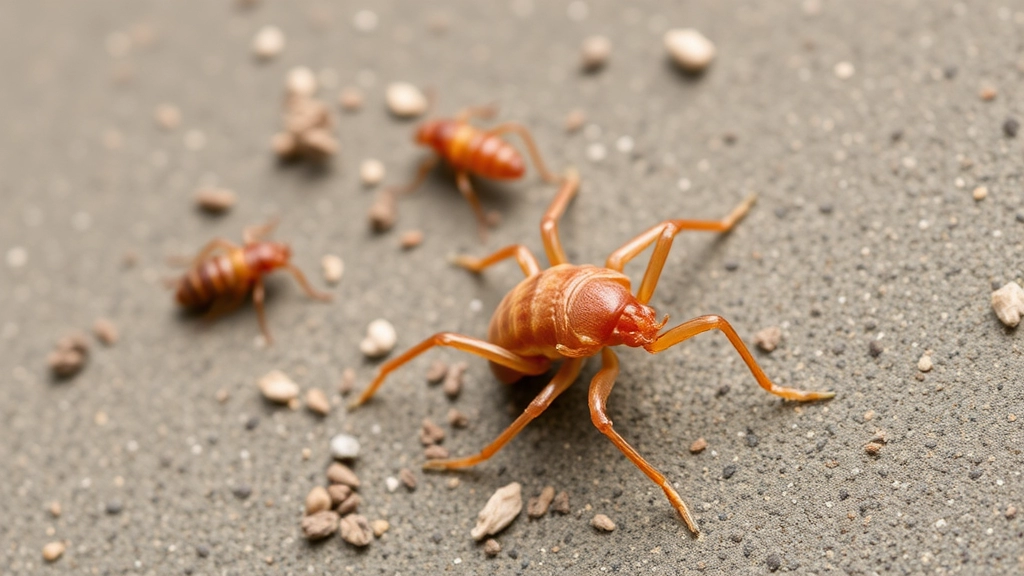
Have you noticed tiny specks on your Kalanchoe leaves or little webs forming?
Pest infestations can sneak up on us, turning our beloved plants into a battleground.
Common Pests to Watch For:
- Mealybugs: These little white fluff balls love to hide in the leaf joints.
- Spider Mites: Tiny and often invisible, they leave fine webs and yellow spots.
- Aphids: Small, green or black bugs that cluster on new growth.
Signs of Infestation
- Yellowing leaves
- Sticky residue (honeydew)
- Distorted or curling leaves
If you spot any of these signs, it’s time to take action!
Steps to Manage Pests:
- Isolate the Plant: Keep it away from your other plants to prevent spreading.
- Manual Removal: Wipe leaves with a damp cloth or use a soft brush to remove pests.
- Insecticidal Soap: Spray a diluted solution on affected areas. It’s gentle yet effective.
- Neem Oil: A natural option that disrupts pest life cycles. Just mix with water and spray.
- Regular Checks: Keep an eye on your plants to catch any issues early.
Nutrient Deficiencies and Their Symptoms
Have you ever noticed your Kalanchoe plants struggling despite your best care efforts? Nutrient deficiencies could be the hidden culprit behind those brown leaves.
When your Kalanchoe lacks essential nutrients, it can lead to various symptoms that are often mistaken for other issues. Here’s what to look out for:
Common Nutrient Deficiencies
- Nitrogen Deficiency
- Yellowing leaves, starting from the lower ones.
- Stunted growth and weak stems.
- Phosphorus Deficiency
- Dark green or purplish leaves.
- Poor flowering and overall plant vitality.
- Potassium Deficiency
- Brown leaf tips and edges.
- Weak resistance to diseases and pests.
- Iron Deficiency
- Yellowing between leaf veins, while veins remain green.
- More pronounced in younger leaves.
How to Address Nutrient Deficiencies
- Fertilisation
- Use a balanced, water-soluble fertiliser every 4-6 weeks during the growing season.
- Consider a specific succulent fertiliser for optimal results.
- Soil Quality
- Ensure you are using well-draining soil rich in organic matter.
- Regularly amend the soil with compost to maintain nutrient levels.
- Observation
- Keep a close eye on your plant’s growth and appearance.
- Adjust fertilisation based on the season and plant response.
Understanding these nutrient needs is crucial for maintaining the health of your Kalanchoe. For more detailed care tips, you might find the Kalanchoe Mother of Thousands Care Guide helpful. Additionally, if you’re noticing your Kalanchoe leaves turning brown, check out our guide on why Kalanchoe leaves turn brown for more insights.
Proper Pruning Techniques to Prevent Leaf Browning
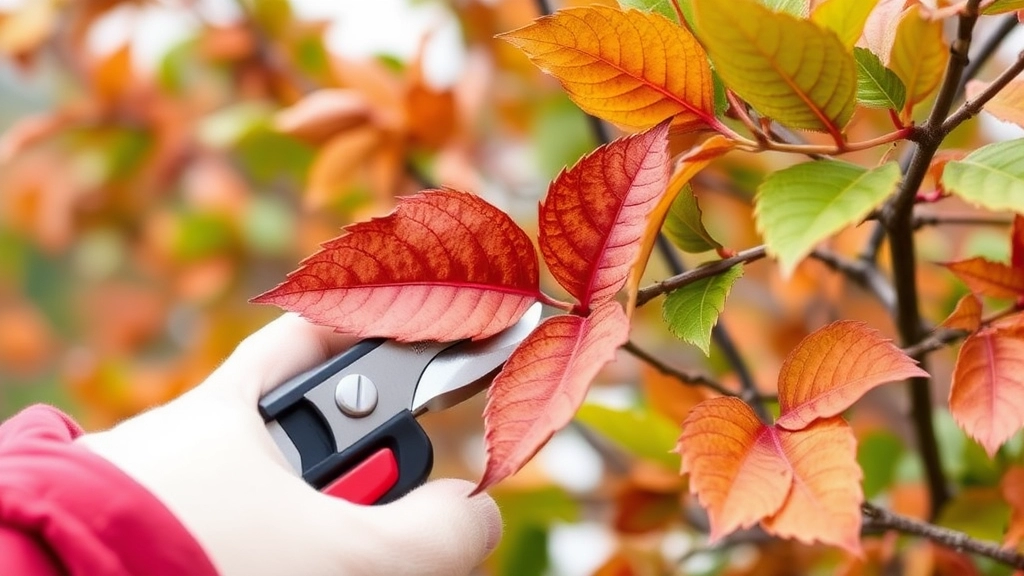
Ever looked at your Kalanchoe and noticed those pesky brown leaves? It can be frustrating, right?
One of the best ways to keep your plant healthy is through proper pruning. Not only does it enhance its appearance, but it also helps prevent leaf browning. Here’s how to do it effectively:
When to Prune
- Timing is Key: Aim to prune during the growing season, typically in spring or early summer. This is when your Kalanchoe is most active and can recover quickly.
Tools You’ll Need
- Sharp Scissors or Pruning Shears: Make sure they’re clean to avoid any infections.
- Gloves: Protect your hands, especially if your plant has sharp edges.
Steps to Prune
- Identify the Problematic Leaves: Look for brown, wilted, or dead leaves. These are your targets.
- Cut at the Base: Use your scissors to snip the leaves off at the base. This helps prevent any further stress on the plant.
- Remove Dead Flowers: If your Kalanchoe has finished blooming, cut off those spent flowers too. This encourages new growth.
- Don’t Overdo It: Only remove about a third of the plant at a time. Too much pruning can shock the plant.
Aftercare
- Water Sparingly: After pruning, give your plant a bit of time before watering again. This helps it recover without the risk of overwatering.
- Monitor Growth: Keep an eye on your plant over the next few weeks. If you see new growth, you’re on the right track!
Best Practices for Watering Kalanchoe Plants
When it comes to keeping your Kalanchoe plants healthy, watering is crucial. Many gardeners often worry about how much or how little to water, and these concerns can lead to brown leaves.
Understanding Water Needs
Kalanchoe plants are succulents, which means they store water in their leaves. This unique characteristic influences their watering needs. Here are some best practices to ensure your Kalanchoe thrives:
Tips for Maintaining Healthy Kalanchoe Leaves
So, you’ve tackled the common causes of brown leaves in your Kalanchoe, but how do you keep those vibrant greens thriving?
1. Water Wisely
- Check the Soil: Always feel the top inch of soil. If it’s dry, it’s time to water.
- Use Room Temperature Water: Cold water can shock the roots.
- Water Less in Winter: Kalanchoe goes dormant, so cut back on watering.
2. Light it Right
- Bright, Indirect Light: Place your plant near a window, but avoid direct sunlight that can scorch the leaves.
- Rotate Regularly: This helps all sides of the plant get equal light.
3. Temperature Matters
- Ideal Range: Keep your Kalanchoe in a room that’s between 15°C to 25°C.
- Avoid Drafts: Sudden temperature changes can stress your plant.
4. Fertilize Sparingly
- Use a Balanced Fertilizer: Feed once in spring and once in summer.
- Dilute It: Always dilute your fertilizer to avoid burning the roots.
5. Prune for Health
- Remove Dead Leaves: Snip off any brown or wilted leaves to encourage new growth.
- Trim Leggy Stems: This can help your Kalanchoe stay bushy and vibrant.
6. Watch for Pests
- Regular Checks: Look for signs of pests like mealybugs or aphids.
- Use Neem Oil: A natural remedy that can help keep pests at bay.
7. Repot When Needed
- Every Couple of Years: If your plant outgrows its pot, it’s time for a bigger home.
- Choose Well-Draining Soil: This prevents root rot and promotes healthy growth.
8. Humidity Levels
- Moderate Humidity: Kalanchoes prefer average humidity. If your home is too dry, consider misting occasionally.
9. Observe and Adjust
- Keep an Eye on Changes: If you notice any changes in leaf colour or texture, adjust your care routine accordingly.
For more detailed care tips, you might find our Ultimate Guide to Kalanchoe Blossfeldiana Hybrid Care helpful. Additionally, if you’re dealing with specific issues like leaf discoloration, our guide on Why Are My Kalanchoe Flowers Losing Color might offer some useful insights.
FAQs on Kalanchoe Plant Leaves Turning Brown
What are the common signs of overwatering in Kalanchoe plants?
Common signs of overwatering include brown, mushy leaves, wilting despite wet soil, yellowing leaves, and mushy stems. If the soil remains soggy for too long, it’s a clear indicator that you might be overwatering your plant.
How can I prevent overwatering my Kalanchoe plant?
To avoid overwatering, use well-draining soil designed for succulents, ensure your pot has drainage holes, water sparingly only when the top inch of soil is dry, and observe the weather conditions. Remember, Kalanchoe plants prefer to be on the drier side.
How does poor drainage affect Kalanchoe leaves?
Poor drainage can lead to water accumulation at the roots, creating a soggy environment that causes root rot. This results in brown leaf tips, wilting, yellowing leaves, and sometimes a foul odor from the soil.
What temperature range is ideal for Kalanchoe plants?
Kalanchoe plants thrive in temperatures between 18°C to 24°C. Exposure to temperatures below 10°C can cause cold stress, while excessive heat, especially in direct sunlight, can lead to leaf scorching.
What are the common pests that affect Kalanchoe plants?
Common pests include mealybugs, spider mites, and aphids. These pests can cause yellowing leaves, sticky residue (honeydew), and distorted or curling leaves.
How can I manage pest infestations on my Kalanchoe plant?
To manage pests, isolate the affected plant, manually remove pests with a damp cloth or soft brush, use insecticidal soap or neem oil, and perform regular checks to catch any issues early.
When is the best time to prune Kalanchoe plants?
The best time to prune Kalanchoe plants is during the growing season, typically in spring or early summer. This is when the plant is most active and can recover quickly from pruning.
What tools do I need for pruning Kalanchoe plants?
You’ll need sharp scissors or pruning shears (ensure they are clean to avoid infections) and gloves to protect your hands, especially if your plant has sharp edges.
What are the steps for proper pruning of Kalanchoe plants?
Identify and cut problematic leaves at the base, remove dead flowers, and avoid over-pruning by removing only about a third of the plant at a time. After pruning, water sparingly and monitor the plant for new growth.
References
-
Kalanchoe Plant Care: Tips For Growing Kalanchoe Plants
-
How to Grow Kalanchoe Indoors
-
Kalanchoe: How to Grow and Care for Kalanchoe Plants
